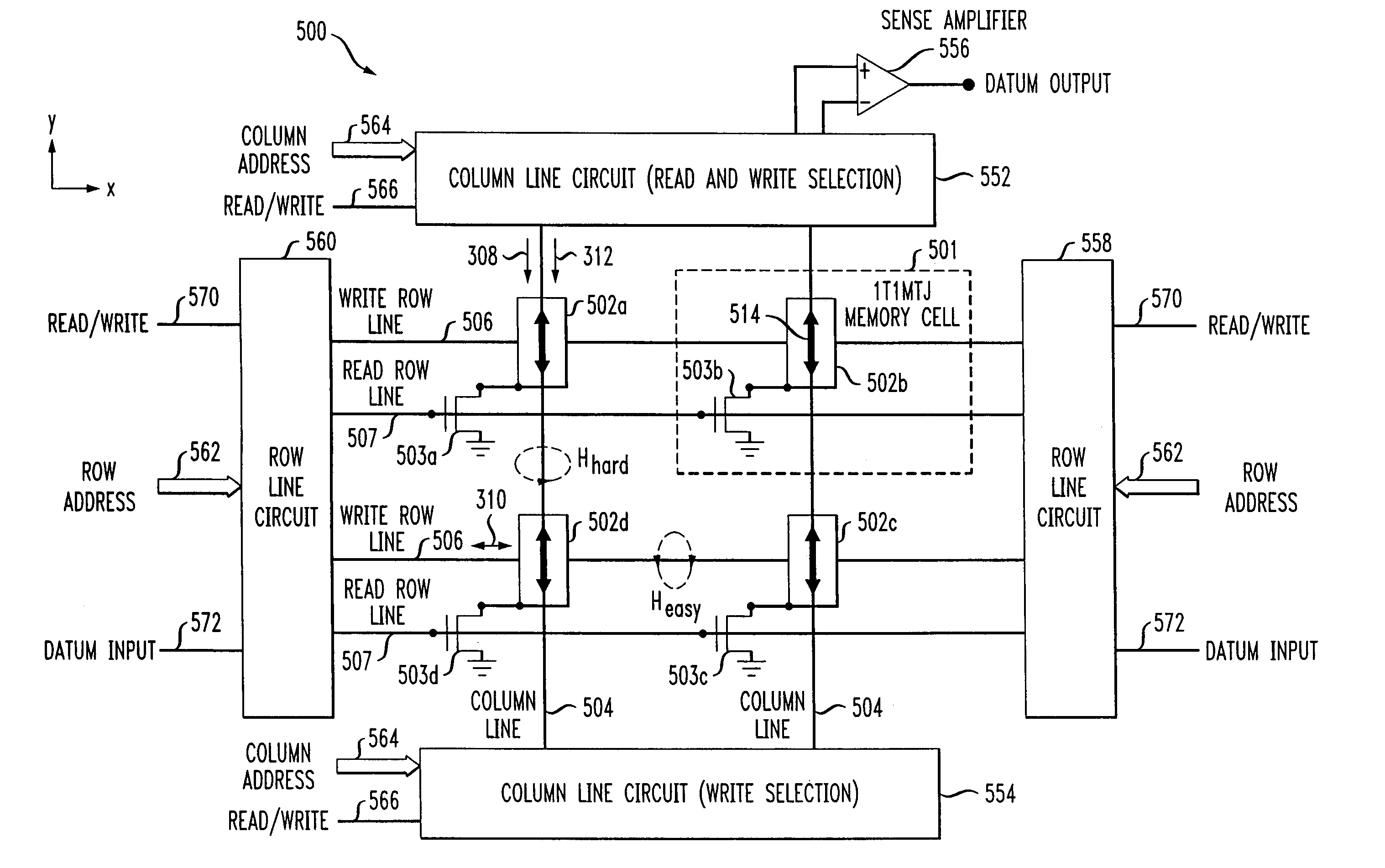Magnetic random access memory using memory cells with rotated magnetic storage elements
a magnetic storage element and random access technology, applied in the field of memory circuits, can solve problems such as unfavorable reduction of array efficiency, and achieve the effect of optimizing read and write operations and reducing the size of memory cells
- Summary
- Abstract
- Description
- Claims
- Application Information
AI Technical Summary
Benefits of technology
Problems solved by technology
Method used
Image
Examples
Embodiment Construction
[0023]The present invention will be described herein in the context of an illustrative cross-point MRAM array. The invention, however, is more generally applicable to techniques for improving the read access time of an MRAM array by providing an architecture in which read and write ports associated with at least a portion of the memory cells in the array are spatially separated from one another. Although implementations of the present invention may be described herein with reference to magnetic tunnel junction (MTJ) devices, it should be appreciated that the invention is not limited to such devices, and that other suitable devices, such as, for example, other magneto-resistive memory elements, may be similarly employed with or without modifications to the inventive magnetic memory architecture.
[0024]As will be understood by those skilled in the art, “word lines” are generally defined as being oriented in a row or horizontal direction and are used during a conventional write operatio...
PUM
 Login to View More
Login to View More Abstract
Description
Claims
Application Information
 Login to View More
Login to View More - R&D
- Intellectual Property
- Life Sciences
- Materials
- Tech Scout
- Unparalleled Data Quality
- Higher Quality Content
- 60% Fewer Hallucinations
Browse by: Latest US Patents, China's latest patents, Technical Efficacy Thesaurus, Application Domain, Technology Topic, Popular Technical Reports.
© 2025 PatSnap. All rights reserved.Legal|Privacy policy|Modern Slavery Act Transparency Statement|Sitemap|About US| Contact US: help@patsnap.com



